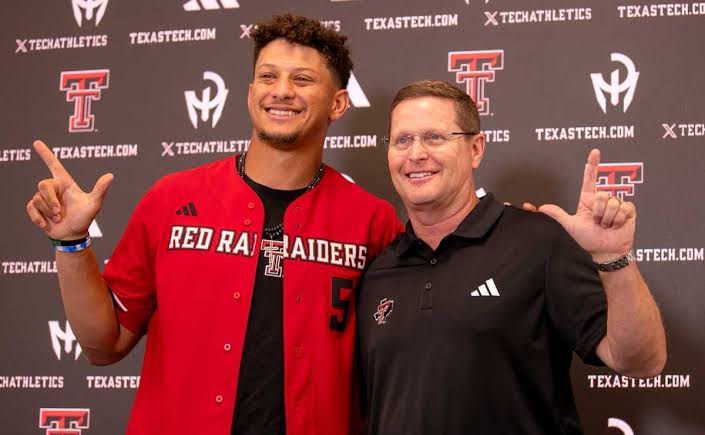Texas Tech has also positioned itself at the forefront of the NCAA’s upcoming revenue-sharing model, part of the massive House v. NCAA antitrust settlement. The proposed settlement allows schools to distribute up to $20.5 million annually to athletes beginning July 1, 2025 . Texas Tech’s athletic director, Kirby Hocutt, has crafted a plan to allocate approximately 74% of these funds to football players ($3.6 million), and appropriately scaled shares to other sports including women’s basketball ($390 K)

Texas Tech Leads NCAA Revenue-Sharing Era with Forward-Thinking Athlete Compensation Plan
Texas Tech University has positioned itself at the forefront of a transformative shift in college athletics. With the landmark antitrust case House v. NCAA resulting in a proposed settlement that will reshape the collegiate sports financial landscape, schools will soon be allowed to directly compensate their athletes—an unprecedented move in NCAA history. As part of the settlement, schools can distribute up to $20.5 million annually to athletes beginning on July 1, 2025, and Texas Tech is already well ahead of the curve in preparing for this new reality.
At the center of this proactive stance is Kirby Hocutt, Texas Tech’s longtime athletic director, who has developed a detailed strategy on how to allocate these new funds fairly and strategically. His plan not only reinforces the university’s commitment to its athletes but also sets a compelling standard for transparency, gender equity, and prioritization within athletic departments.
Understanding the House v. NCAA Settlement
The House v. NCAA lawsuit challenged the NCAA’s long-standing restrictions on compensating student-athletes for their name, image, and likeness (NIL) and other commercial avenues. As a result of increasing pressure and legal scrutiny, the proposed $2.8 billion settlement not only includes retroactive damages but also lays the groundwork for direct revenue-sharing between universities and athletes—something previously unimaginable in the NCAA’s amateurism model.
The new system will enable schools to distribute up to $20.5 million annually to their athletes, but how each school chooses to allocate that amount remains at their discretion. This decentralized approach has placed athletic directors and university administrators in a powerful position to reshape the athlete experience—and Texas Tech’s plan offers a glimpse into what that future might look like.
A Strategic Allocation Plan Led by Kirby Hocutt
Texas Tech’s Athletic Director Kirby Hocutt has crafted a forward-looking plan that demonstrates both commitment to the football program and equitable support for other sports, particularly women’s athletics. According to the current proposal, approximately 74% of the school’s annual revenue-sharing funds—equivalent to $15.17 million—will be allocated to football, which is the primary revenue generator for most Division I schools. Within that, $3.6 million is specifically earmarked for football players.
This share ensures that the athletes who drive television contracts, ticket sales, and brand recognition receive compensation reflective of their market impact. But Hocutt hasn’t stopped at football. His plan also allocates scaled and meaningful funds to athletes across other sports programs, including $390,000 specifically for women’s basketball players. This inclusion reflects a broader commitment to gender equity and NCAA Title IX compliance, which mandates that schools provide equal opportunities for male and female athletes.
Football: The Economic Engine
Football remains the dominant force in collegiate sports revenue, particularly at Power Five schools like Texas Tech. The decision to allocate the majority of funds to football aligns with its substantial contribution to the university’s bottom line. From massive broadcast rights to merchandise sales and alumni donations, football drives the financial success of the entire athletics department.
Hocutt’s $3.6 million direct investment into football players represents a thoughtful recognition of that value, while also helping Texas Tech stay competitive in athlete recruitment and retention. In a college sports environment where NIL and revenue-sharing opportunities can influence decision-making, Texas Tech is sending a strong message: they are ready to compensate athletes fairly and competitively.
Commitment to All-Around Athletic Excellence
While football is taking the lion’s share, Texas Tech’s model doesn’t neglect its other sports. Women’s basketball, which continues to grow in popularity and competitiveness nationwide, is receiving nearly $400,000 in annual support. Other Olympic and non-revenue sports will also receive proportionally scaled shares based on participation, team success, and marketability. This balanced distribution is expected to enhance athlete satisfaction, boost morale, and promote a more holistic sports culture on campus.
Hocutt emphasized the importance of transparency, equity, and planning in building the compensation structure. “We’re preparing not just for a change in policy but a change in philosophy,” Hocutt said in a recent press briefing. “This is about recognizing the value our athletes bring—not just in revenue terms, but in culture, community, and excellence.”
Setting a Standard Across the NCAA
Texas Tech’s early and detailed plan places it among a small group of forward-thinking athletic departments ready to embrace the new revenue-sharing framework. While many schools are still weighing their options or awaiting formal guidelines from the NCAA and conferences, Texas Tech is taking a leadership role that could influence how others approach the process.
By crafting a scalable model that rewards top-performing programs while respecting the contributions of all athletes, Hocutt is setting an example of how schools can meet legal obligations and moral imperatives without sacrificing competitiveness.
The Future of College Athletics
The implementation of direct revenue-sharing is a historic change that fundamentally redefines the relationship between universities and their student-athletes. Texas Tech’s early adoption of a comprehensive, inclusive, and strategic plan demonstrates a clear understanding of where college sports are headed.
As July 1, 2025, approaches, schools that prepare thoughtfully—like Texas Tech—will likely benefit not only in court compliance but also in athlete recruitment, fan engagement, and public trust. With Kirby Hocutt’s leadership, Texas Tech is making it clear: the Red Raiders are ready for the new era of collegiate athletics.

